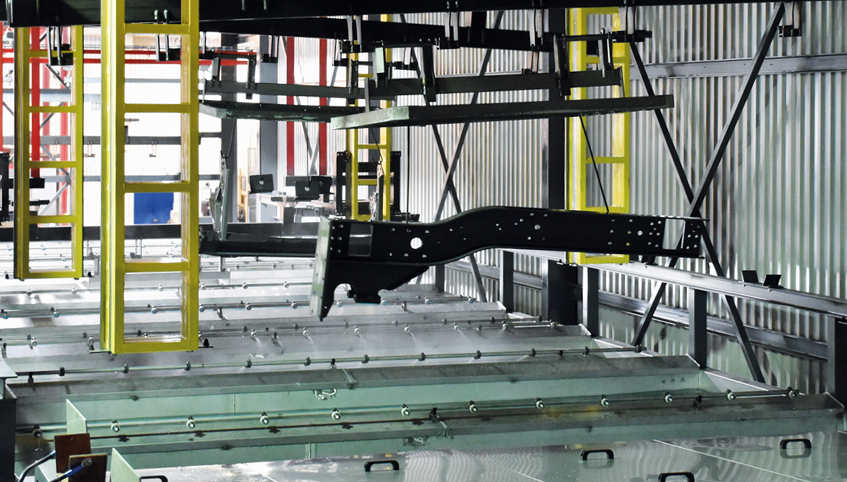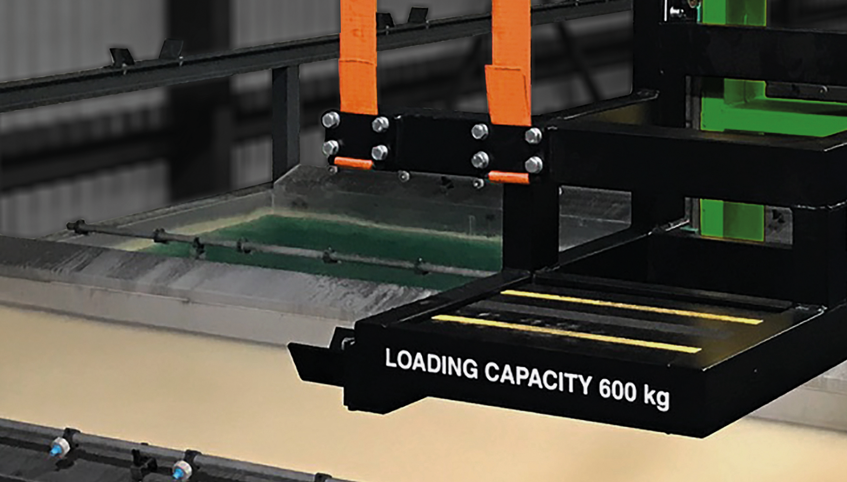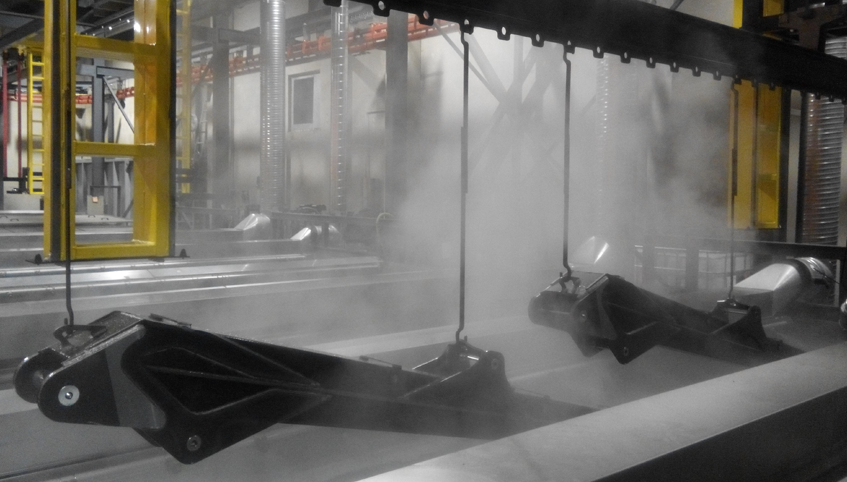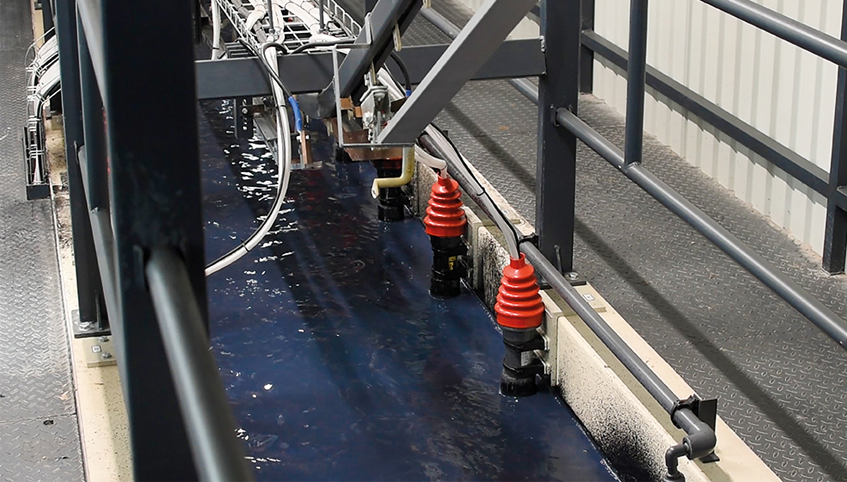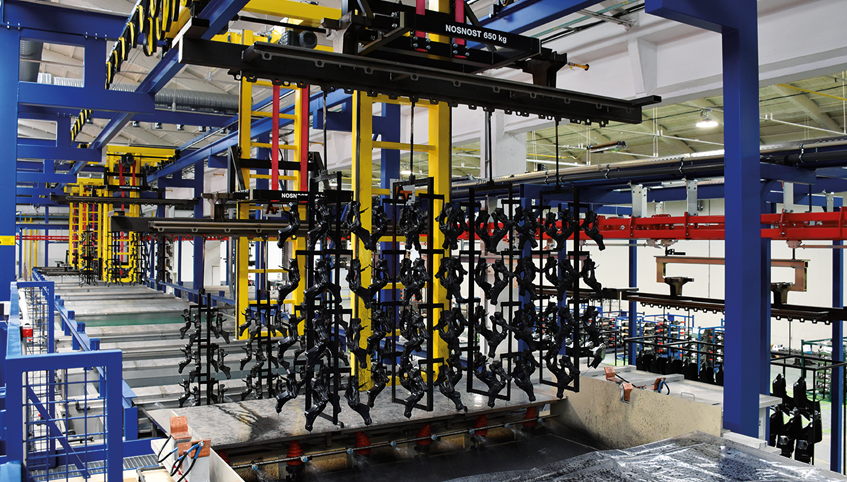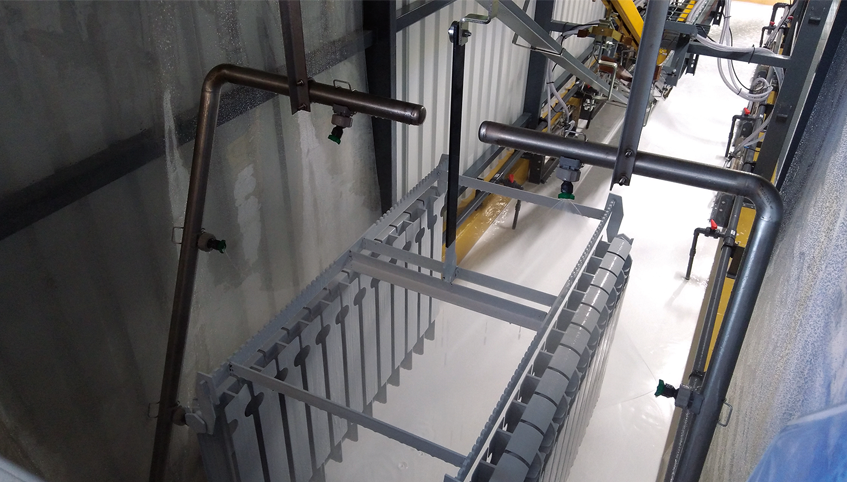E-coat Lines
E-coat (electrophoretic coating) is a very advanced liquid paint process. It is widely used as a primer (radiators and car bodies as well-known examples), or for stand-alone coating (fences, shock absorbers and similar).
E-coat comes in two versions:
- Cataphoretic coating – which is most commonly used
- Anaphoretic coating – which actually is the original type of e-coat
Both versions typical in two paint types:
- Epoxy
- Acrylic
To have full advantage of the e-coat and to ensure that the e-coat will not be destroyed, a very well designed pretreatment is needed.
Contact us for advice and guidance - we can supply you with the best solution.
Application and use
E-coat comes in anaphoretic or cataphoretic systems. The paint itself is based on epoxy or acrylate, with epoxy being the most commonly used.
For both systems the main components are:
- Dipping tank
- Spraying in ultrafiltration (UF) 1
- Spraying / dipping in UF 2
- Spraying / dipping in UF 3 or demi water
Function
A circulation pump keeps the paint in motion. It brings the paint from the bottom of the tank and back to the surface. An overflow ensures a constant level and is led to a reservoir vessel to which the new paint is added.
The paint is kept clean and fresh by a very advanced control of the paint flow through the filters and the anolyte system. Adding new pigment and binder is essential as well.
The control of the current can be automatic ensuring adjustment to the load of m2 in the tank, or it can be simpler if the production is consistent.
Handling
The products or items can be dipped automatically by means of a descent in the conveyor system or by means of a rising/lowering device.
Construction
The paint tank consists of a stable welded construction with a shape adapted to the products and the conveyor guiding. The tank is stiffened with a steel construction.
The outlet is provided with a filter for protection of the pump. The pump is chosen individually according to the paint type used.
The e-coat tank itself is painted with a high quality 3-layer electrostatic insulator.
Heating/cooling
If the paint requires a constant temperature for the application, the paint tank can be provided with a temperature control. The temperature regulation can be done by a heat exchanger or by means of a double wall tank with water circulation.

